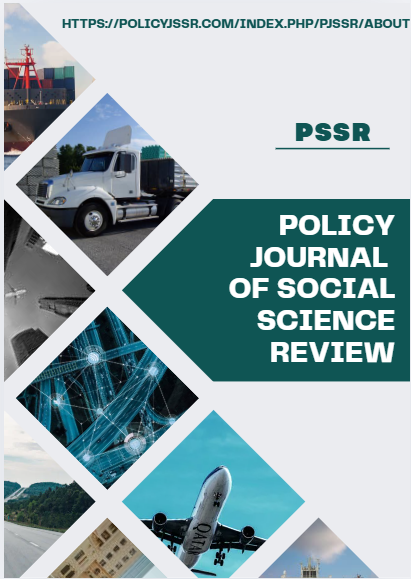ROLE OF LOCAL GOVERNMENT IN INFRASTRUCTURE DEVELOPMENT AND SERVICE DELIVERY IN DISTRICT BANNU, KHYBER PAKHTUNKHWA, PAKISTAN
Abstract
This study assesses the role of local government in infrastructure development and service delivery in District Bannu, Khyber Pakhtunkhwa, Pakistan. Primary data were collected from three tehsils—Bannu, Kakki, and Miryan—using a combination of questionnaires for educated respondents and interviews for uneducated respondents. A total of 652 respondents aged 20–60 years were selected through stratified random sampling using Taro Yamani’s formula, including 400 community members, 221 elected local government representatives, and 31 stakeholders from relevant departments. Data analysis was performed using univariate and bivariate methods. Frequency distributions described patterns in responses, while chi-square tests measured associations between variables. Results indicate a highly significant association (P=0.000) between infrastructure establishment (roads, drainage systems, and community centers) and local satisfaction. Similarly, feeder road construction was strongly linked to the provision of agricultural services (fertilizers, seeds, and pesticides), and the establishment of health centers was significantly associated with improved access to healthcare services and institutional deliveries. Funding allocation for infrastructure also showed a significant relationship with local participation in decision-making processes. The findings highlight the critical role of local governments in providing essential infrastructure and services. To enhance development outcomes, it is recommended that local governments allocate dedicated funds for infrastructure projects, ensuring better service delivery and improved quality of life for residents.
Keywords: Local Government, Infrastructure Development, Service Delivery, Rural Areas, Bannu





